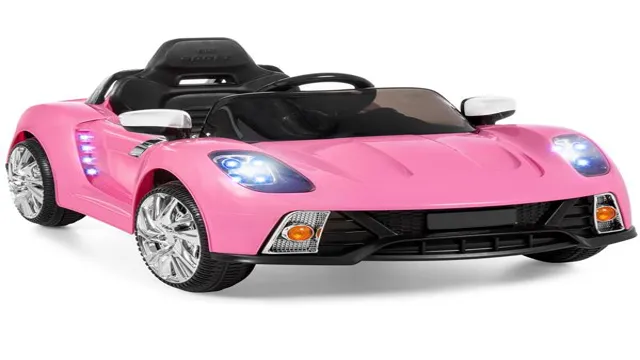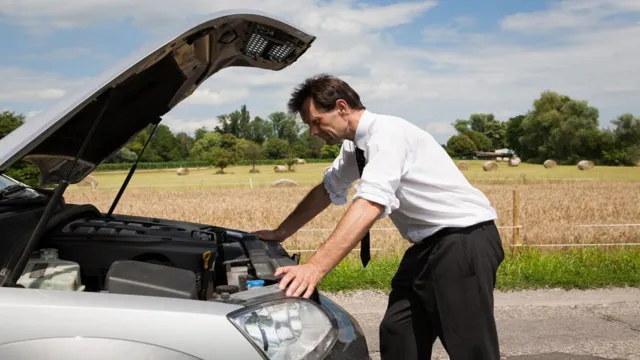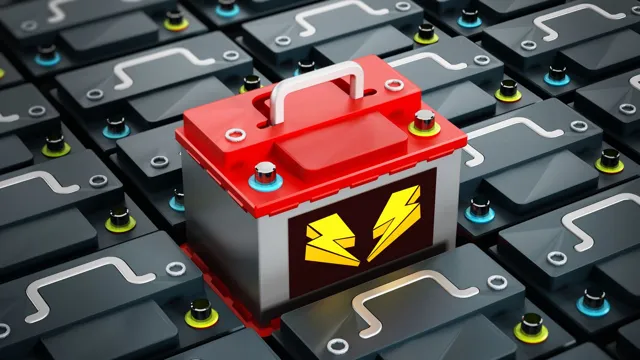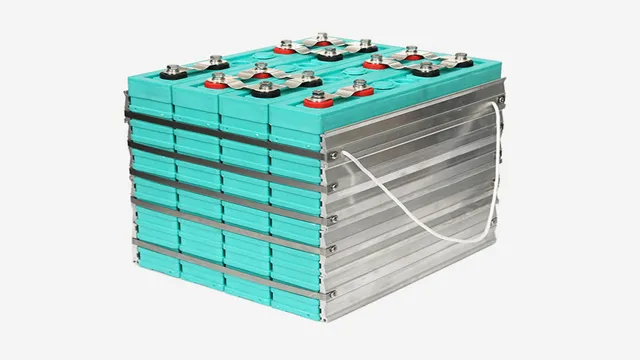Revive Your Dead Car Battery and Power Your Electric Fence with These Simple Steps
Do you ever wonder what else you can do with your car battery besides starting your engine? Well, it turns out that a car battery is capable of powering more than just your vehicle. From electric fences to camping power sources, there are many practical and creative uses for a car battery. In this guide, we’ll explore the versatility of car batteries and offer tips on how to repurpose them for various purposes.
Whether you’re a farmer looking to keep your livestock in check or a camper in need of some extra juice, this guide has got you covered. So, let’s dive in and see all the amazing things you can do with your car battery!
Introduction
Looking for a reliable and cost-effective way to power your electric fence? Believe it or not, you may already have the perfect solution right in your driveway! That’s right- your car battery can be used to power your electric fence, providing a steady and consistent source of energy to keep your livestock safe and secure. By hooking up your battery to a battery-powered fence energizer, you can ensure that your fence delivers the shock needed to discourage animals from crossing it. Plus, by using a car battery, you’ll save money on expensive and complicated electrical installations.
So, if you’re looking for a simple and effective way to power your electric fence, give your car battery a try- you might just be surprised at how well it works!
Why electrify a fence
Electrifying a fence may seem like a drastic measure, but it can actually be a smart choice for those looking to protect their property. By adding an electrical current to your fence, you can create a significant deterrent for potential intruders. The jolt of electricity that they would receive if they attempt to climb over or cut through the fence will be a strong warning to stay away.
Not only does an electrified fence provide added security, but it can also be a humane way to control livestock and keep them contained. By using well-designed electric fencing, you can keep your animals safe and prevent them from wandering off. Overall, the benefits of electrifying a fence can make it a worthwhile investment for anyone looking to protect their property or livestock.

Parts of an electric fence
Electric fence installation is beneficial for keeping animals in or out of an area. The electric fence is essentially a circuit that sends a pulsating electric charge through the fence wires. The parts of an electric fence include the energizer, wires, posts, insulators, and ground rods.
The energizer is the heart of the electric fence system as it sends the electric charge through the wires. The fence wires are strung between the posts, and their spacing will depend on the type of animal being contained or excluded. Insulators are used to secure the wires to the posts, keeping them electrically separate from the ground.
The ground rods create an electrical circuit, which allows the current to flow from the energizer to the fence wires. The electric fence parts work together to create a safe and effective barrier.
Converting Your Car Battery
If you have an old car battery lying around and you need an electric fence for your property, did you know that you can convert that battery into a power source for your fence? It’s a simple process that can save you money and repurpose a battery that may have otherwise gone to waste. To convert a car battery to an electric fence, you’ll need a few materials like an electric fence charger, voltage regulator, and a battery terminal extender. Once you have these supplies, you’ll need to connect them to the battery and charger and make sure it’s properly grounded.
With the right setup, your car battery can provide a reliable power source for your electric fence, helping to keep your property safe and secure. Plus, you’ll feel good knowing that you’re repurposing an old battery instead of throwing it away.
Selecting the right battery
Selecting the right battery for your car is crucial for ensuring optimal performance and longevity. If you’re considering converting your car battery, it’s important to choose the right type of battery for your vehicle and driving needs. Lithium-ion batteries are a popular choice for conversions due to their high energy density and long lifespans.
Additionally, they are generally more environmentally friendly and require less maintenance than traditional lead-acid batteries. However, it’s important to keep in mind that lithium-ion batteries can be more expensive upfront and may require special charging equipment. Ultimately, it’s important to do your research and consult with a professional to determine the best battery option for your specific car and usage.
Building your battery box
Building your battery box can seem like a daunting task, but with the right tools, it can be a fun and rewarding DIY project. One important step in building your battery box is converting your car battery to make it suitable for use. This involves removing the battery from your car and disconnecting it from any electronics or devices it may be connected to.
Once removed, you will need to remove the top cover of the battery and empty out its contents before adding new battery acid. Once the battery has been refilled with fresh acid, it is ready for use in your battery box. Be sure to handle the battery with care, wear protective gloves and goggles, and dispose of any hazardous materials responsibly.
With a little patience and attention to detail, you can successfully convert your car battery and build a reliable battery box for your needs.
Connecting the battery to the fence charger
Converting your car battery into a power source for your electric fence charger is a cost-effective solution for keeping your animals safe and contained. Connecting your battery to the charger is relatively simple, but it requires some basic electrical know-how and the use of a few specialized tools. The first step is to disconnect the battery from your car’s electrical system.
Once you’ve done that, you’ll need to clean the battery terminals and attach the correct gauge wires to the positive and negative terminals. It’s important to use a fuse in the circuit to protect against electrical shorts and potential fires. Once you’ve established the connections, you can mount the charger and hook it up to the fence.
By following these steps, you’ll have an efficient and reliable source of power for your electric fence that won’t break the bank.
Maintaining Your Electric Fence
If you are looking for a budget-friendly way to power up your electric fence, consider using a car battery. Not only does this option give you a reliable and cost-effective energy source, but it also enables you to have control over the power output. When using a car battery to electrify your fence, it’s essential to maintain it regularly.
Keep the battery terminals clean and dry, and store it in a cool and dry place to prevent it from overheating. Additionally, check the acid level and replenish it as needed. Remember to use a battery charger to recharge the battery once it’s drained.
By doing these simple maintenance tasks, you can ensure that your electric fence remains functional and safe for years to come.
Testing your fence
If you own an electric fence, it’s important to test it regularly to ensure that it’s functioning properly. One of the easiest ways to do so is by using a fence tester, which will measure the voltage of your fence. You should test your fence often, ideally once a week, to make sure that it’s still strong, and that there are no problems with the wires or insulators.
You should also check your grounding system to ensure that it’s functioning correctly and that there are no ground faults. If you notice any issues with your fence, such as weak points or low voltage, you should address them immediately to prevent any potential problems. With proper maintenance and testing, your electric fence can provide safe and effective protection for your animals or property.
Replacing and recharging your battery
Maintaining Your Electric Fence – Replacing and Recharging your battery Electric fences are a reliable and smart way to keep animals and livestock within a designated area without causing them harm. They are easy to install and maintain, and can last for many years when properly looked after. One important aspect to keep in mind when maintaining an electric fence is the battery.
The battery is the lifeblood of the electric fence system, providing the necessary energy to power it. It is important to check the battery status regularly and to replace or recharge it as needed. When it comes to batteries, there are two main types often used in electric fences – dry cell and lead-acid.
Dry cell batteries are common and require replacement every few months. They are easy to replace and do not require any charging. On the other hand, lead-acid batteries are more durable and can last for several years with proper upkeep.
However, they require regular charging to ensure optimal performance. To maintain your electric fence battery, it is important to keep it clean and free of any debris, as this can interfere with its performance. You should also check the voltage levels periodically to ensure they are within the required range.
If the voltage levels are low, replacing or recharging the battery is necessary to avoid any power failures in the fence system. In conclusion, maintaining your electric fence is a crucial aspect of ensuring its longevity and effectiveness. Keeping your battery properly charged or replaced in a timely manner is essential for a hassle-free operating experience.
Knowing the difference between dry cell and lead-acid batteries, and the upkeep required for each can make a difference in the long term. Take a few minutes each week to inspect and maintain your electric fence battery, and rest easy knowing your fence system is performing at its best.
Conclusion
From powering your car to keeping your cattle safe, the journey of a car battery to an electric fence is a tale of versatility and adaptation. Who knew that a device initially designed to start engines could become a tool for animal husbandry? It just goes to show how creative humans can be when it comes to repurposing technology. So if you ever find yourself in need of a DIY electric fence, don’t underestimate the potential of an old car battery – after all, it might just shock you with its hidden talents!”
FAQs
How can a car battery be used for an electric fence?
A car battery can be connected to an electric fence charger to power the fence. The charger converts the battery’s DC output to AC output necessary for the fence.
How long can a car battery power an electric fence?
The power consumption of the fence charger determines how long a car battery will last. Typically, a fully charged car battery can power a low-powered fence charger for several days to a week.
Can a car battery be charged by a solar panel for use with an electric fence?
Yes, a solar panel can be connected to a charge controller, which regulates the charging of the car battery. The charged battery can then be used to power the electric fence.
What are the advantages of using a car battery for an electric fence instead of a grid connection?
Using a car battery for an electric fence provides independence from the grid, making it ideal for remote locations, saves on electricity costs, and prevents power outages from affecting the fence’s operation.






